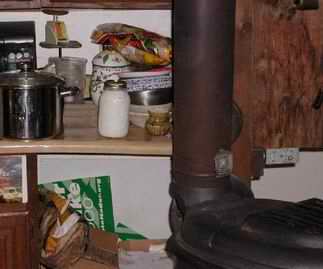

Buttermilk is probably the easiest and most foolproof fermented milk product to make. All you need is active cultured buttermilk for the starter, and fresh milk for it to act on. The formation of buttermilk is based on the fermentation by the starter bacteria which turns lactose into lactic acid. As lactic acid if formed, the pH of the milk drops. Milk proteins, most notably casein, are no longer soluble under acid conditions, and they precipitate out, causing what we recognize as clabbering. Thus the two marked characteristics of buttermilk, its tartness and its thickened nature, are both explained by the presence of lactic acid. The acidity of buttermilk also explains its long refrigerator shelf life. Acid is a natural preservative because it inhibits the growth of pathogenic bacteria. Thus buttermilk keeps easily for weeks in your refrigerator. If you keep it longer, it may develop mold on the inner walls of the jar. This mold belongs to the same group which grow on cheese and is not dangerous. Remove it and the buttermilk can still be used for baking. However, because the bacteria may have died in older samples, they should not be used an an inoculum to make buttermilk.

This is a recipe I have been using for years to make buttermilk in large quantities. I like to use it for baking as well as drinking. It makes pancakes, waffles, and cakes rise very well. You can make any volume of buttermilk you like, so long as you hold to the proportions of 1 part buttermilk plus 4 parts whole milk. I have prepare a gallon of buttermilk (an ingredient in my cornmeal waffles) for an annual waffle breakfast I serve at Clermont College, serving about 120 people. I add 1 quart buttermilk to 1 gallon of fresh whole milk, mix, and pour back into the original containers. The next day, it is nicely thickened. It works because Streptococcus lactis (or a mixed culture of S. lactis plus Leuconostoc citrovorum) ferments the lactose in milk to lactic acid. The acidic pH causes the protein in milk (most prominently casein, pink in the picture below) to precipitate, thickening the liquid. Because the lactose has been broken down to lactic acid, it would cause no problem for those who are lactose intolerant.
It may be that buttermilk could be made with a lower proportion of starter (i.e. 1:6 or 1:8. Anyone have experience with this?) However the 1:4 ratio has worked so well that I have not wanted to mess with the proportions.
